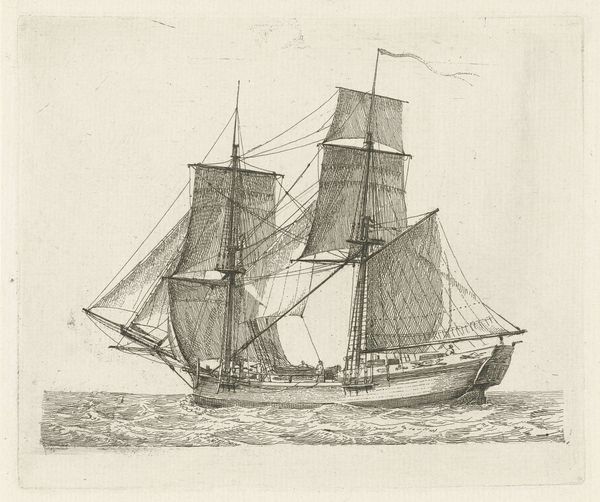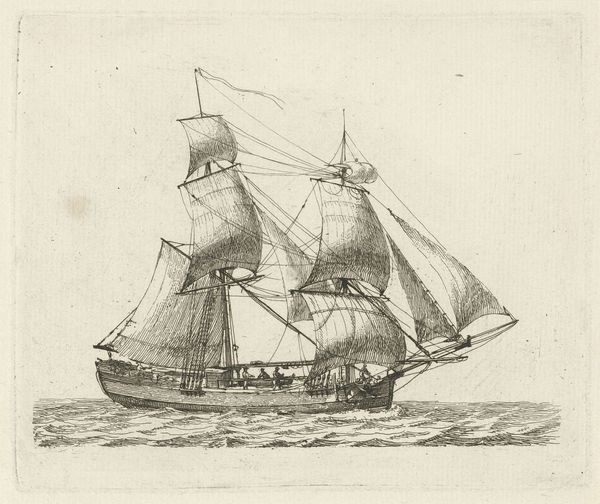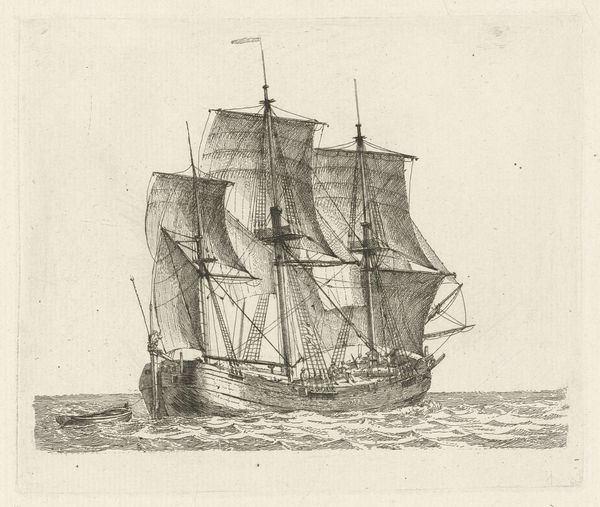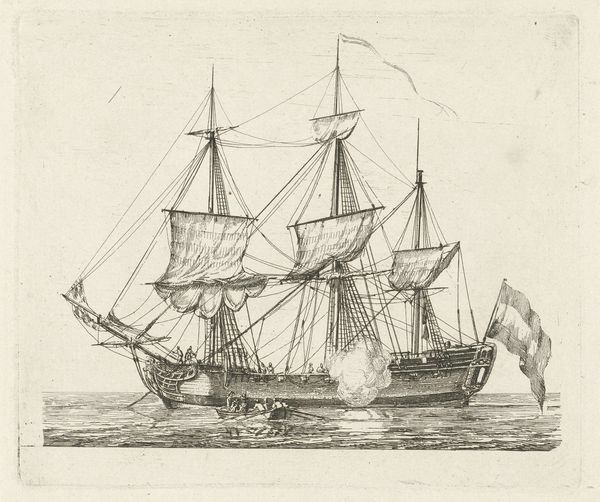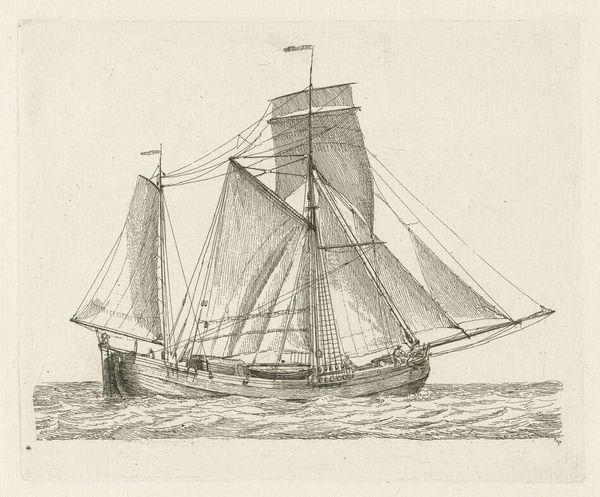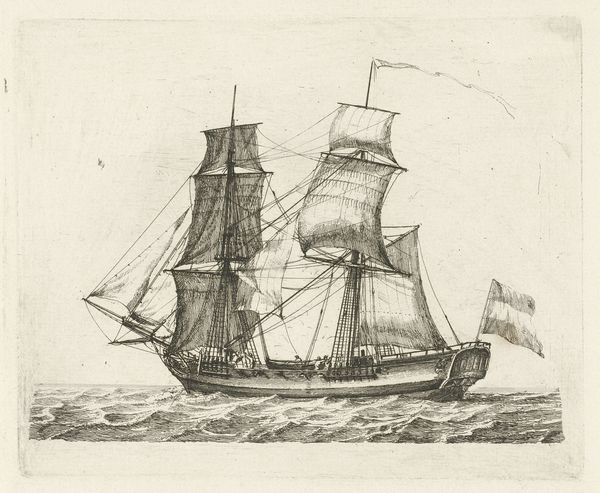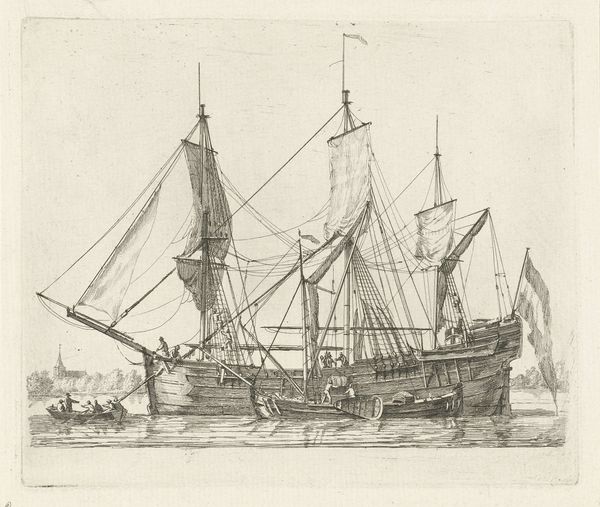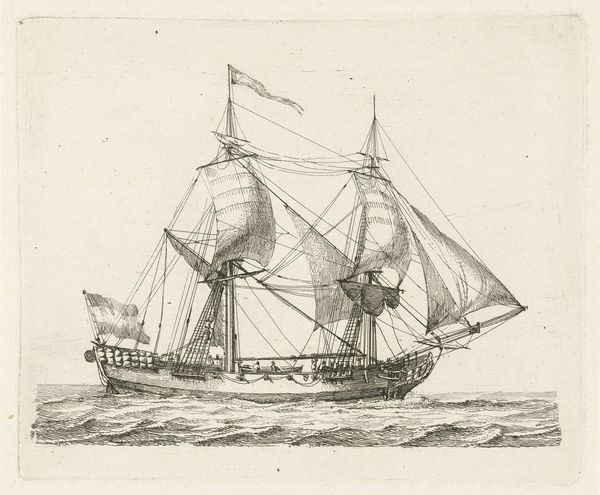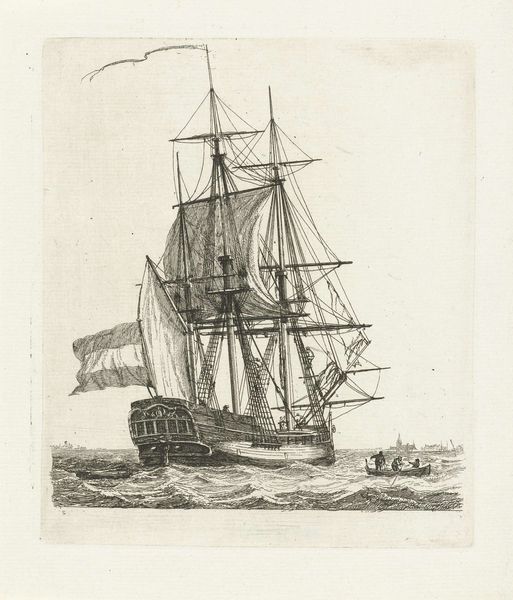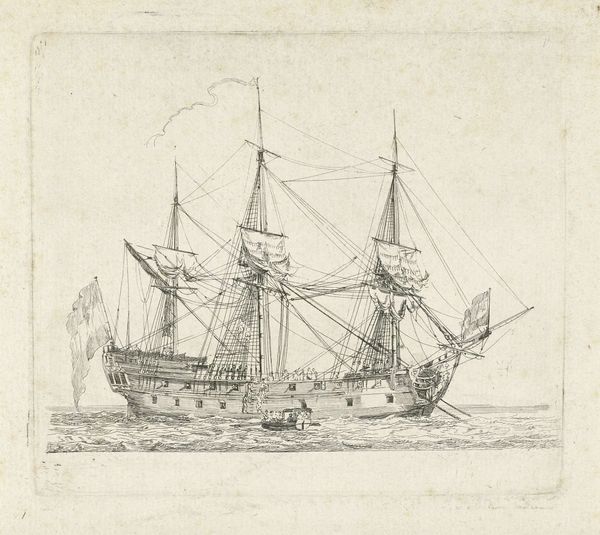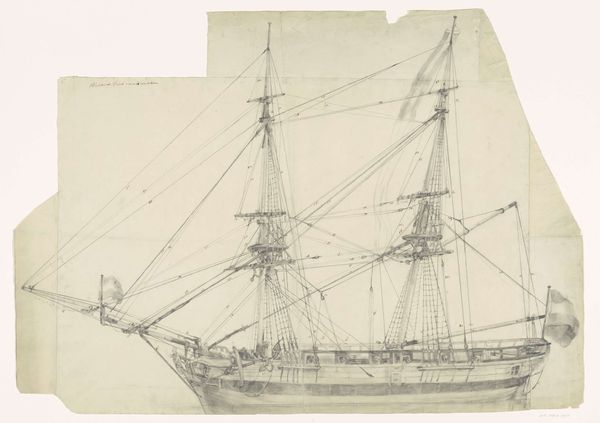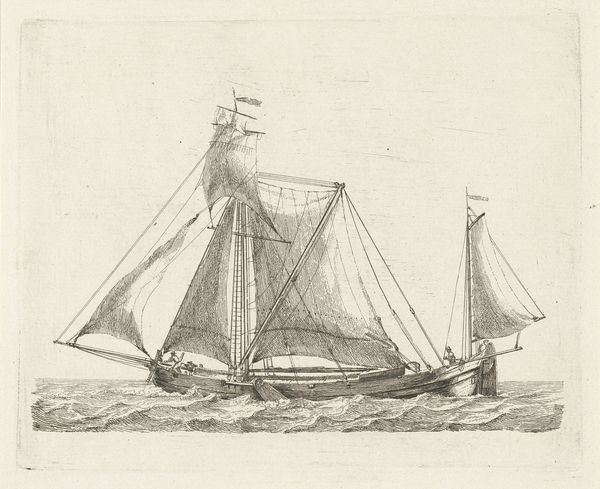
Dimensions: height 128 mm, width 155 mm
Copyright: Rijks Museum: Open Domain
Editor: Here we have Gerrit Groenewegen's "Driemaster voor anker" from 1789, an engraving currently held at the Rijksmuseum. It has this very calm, almost serene quality to it, despite depicting what must have been a bustling scene of maritime commerce. What do you notice first about this print? Curator: I see the work mainly as a depiction of Dutch industry and global trade networks made possible by these ships. Think about the intense labor involved in both shipbuilding and sailing in the late 18th century. The etching portrays not only the vessel, but implies entire systems of material extraction – from the timber felled to construct the hull to the textiles woven for the sails – that formed the backbone of the Dutch economy. Editor: That’s a good point. The materials definitely underpin the narrative. But does the artwork itself present a political viewpoint, or is it a detached observation? Curator: I wouldn’t necessarily assume detached. Look at the precision in rendering the rigging, the evident skill involved in its construction. I think Groenewegen admires the technology and workmanship, and, by extension, perhaps also the empire and trade this ship represents. But we should ask: for whom was this print made? Who had access to representations like these? And what sort of socio-economic background afforded people leisure to enjoy these images? Editor: It's a testament to how much a single image can reveal about broader societal structures. It definitely provides an entryway into understanding the economic underpinnings of the Dutch Golden Age. Curator: Absolutely. Considering art through the lens of production, materials, and dissemination gives us a far richer, and ultimately more grounded, interpretation of the object itself.
Comments
No comments
Be the first to comment and join the conversation on the ultimate creative platform.

